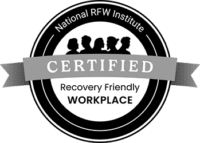4 Must-Know Healthcare Trends and Statistics from 2020
2020 has changed the delivery of healthcare in several fundamental ways. While many of these changes are directly attributable to the COVID-19 pandemic, others have occurred outside the pandemic’s influence. These changes are likely to continue well into 2021, signaling key shifts in the delivery of healthcare for virtually every disease state, including medical and behavioral health. Understanding these shifts can help providers offer more seamless care to their patients while helping patients more successfully engage with their doctors, pharmacists, and mental health professionals. Here are some of the most significant healthcare statistics we saw in 2020.
The Continued Rise of Telehealth
The rise of telehealth services facilitated by the COVID-19 pandemic might be the most impactful healthcare shift of this year. Even before the pandemic, telehealth was poised to make significant increases and make its way into previously unexplored or underexplored conditions, such as oncology and even substance use disorder. Way back in April, when the pandemic was starting, telehealth visits were expected to eclipse one billion by many analysts in the healthcare industry.
Remote care was up over 30 percent in the early days of 2020 and HIPAA relaxed laws to expand how physicians can practice and, in some cases, whom they are able to treat. Although they experienced a significant decrease in July, the Centers for Medicare and Medicaid Services report that, in March through June of 2020, telehealth services increased percent compared to the same time period last year.
Even before the pandemic, telehealth was poised to make significant increases and make its way into previously unexplored or underexplored conditions, such as oncology and even substance use disorder.
Drug Overdoses Have Increased Significantly
The pandemic continues to loom large in the disruption of behavioral healthcare, while creating added anxiety, stress, and depression due to social isolation and economic unrest. These factors have led to a considerable spike in both fatal and non-fatal overdoses. Data from the Centers for Disease Control and Prevention (CDC) indicates that for every 10 suspected overdoses reported to ODMAP in May 2019, 14 overdoses were reported in May 2020. These numbers are also partially attributable to lack of addiction treatment resources, due to COVID-related restrictions. Many addiction care organizations have had to periodically shutter because of public health concerns and adopt more stringent screening policies to keep their existing patients safe.
Care Providers Require Increased Emphasis on Mental Health Service
It can be argued that 2020 has been the most of stressful of all for doctors, nurses, and other frontline healthcare workers. Between ongoing safety concerns stemming from treating COVID patients, as well as the continued scarcity of resources, seeing more and more patient fatalities and having less time off, it’s little wonder that healthcare workers have experienced increased rates of mental health issues, such as depression and anxiety.
These issues not only take a toll on healthcare workers, themselves, they run the risk of making an already small pool of qualified healthcare providers even more finite during one of the worst global health crises in history. This phenomenon of healthcare burnout and mental strain is happening all over the world, not just in the United States.

Primary Care Visits are Significantly Outpacing Specialist Visits
Data from the Commonwealth Fund indicates that visits to dermatologists, urologists, and adult primary care physicians, among other specialists, are exceeding the pre-pandemic levels. But weekly visits to certain other specialists, including pulmonologists and behavioral health providers, remain remarkably low. It’s worth noting, however, that behavioral health was one of the spaces most commonly served by telehealth during the height of the pandemic. Normalization to pre-pandemic levels of ambulatory visits have coincided largely with different types of insurance. Visits by Medicare patients have actually surpassed where they were before the pandemic.
COVID-Related Factors Continue to Demand Intuitive Digital Interventions
Perhaps most of all, COVID has shown us the importance of in-the-moment outreach and engaging patients in their lived environments. In the absence of being able to interface directly with their care provider, patients need intuitive and targeted digital engagement that addresses every aspect of their struggle, from acute condition management, to medication adherence, to lifestyle issues, and mental health support. GoMo Health is proud to have partnered with a variety of healthcare organizations to give their patients the support they need and care assistance they need during these unprecedented times.
Learn about remote care management for patients
Personal Concierge is a virtual care coordinator that offers personalized guidance to patients and members, interactively leading them through their healthcare journey.







Find Us Online